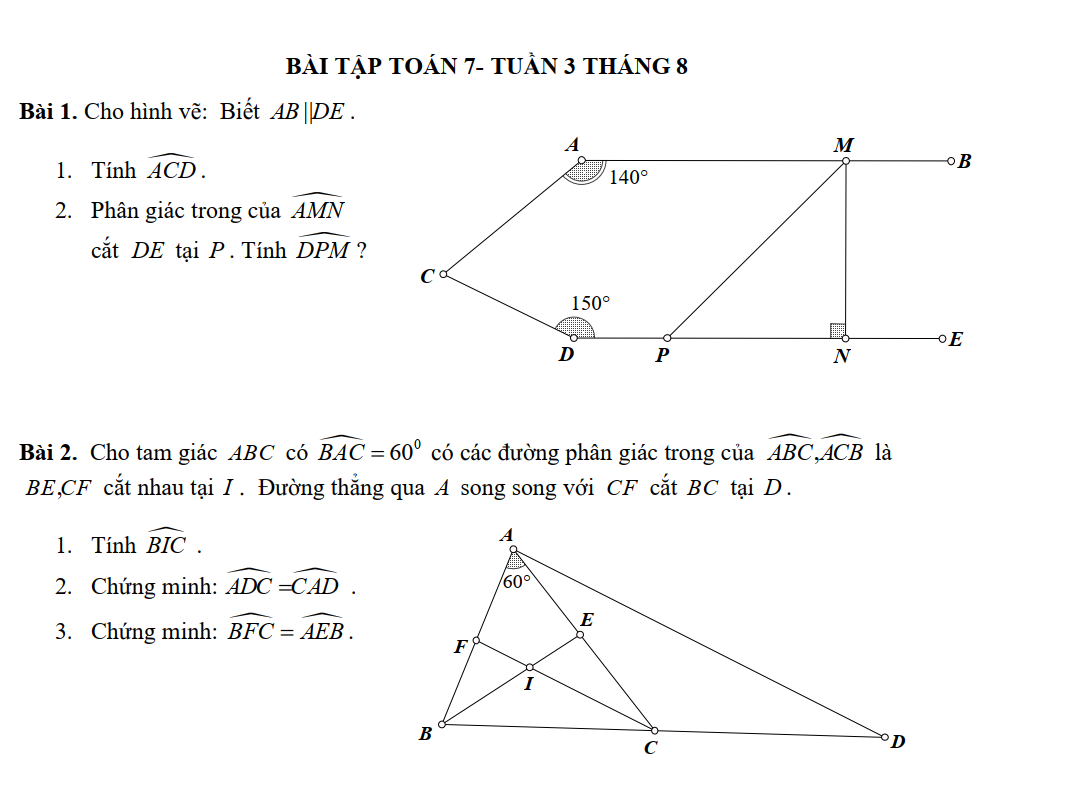(x - 38) : 11 = 89
Mình đang cần gấp chỉ trong tối nay là mình phải có đáp án rùi
Các bạn giúp mình với nhé!
Mình xin cảm ơn

Những câu hỏi liên quan
B1:
1+3+5+7+9+11+13+......+97+99
Các bạn giúp mình nhé mình đang cần gấp cảm ơn các bạn nhiều mình đang cần vào tối nay
= (1+99) + (3 + 97) + ( 5 + 95 ) + ....... + ( 49 + 51 )
có tất cả 25 cặp
= 100 x 25 = 2500
Nhớ k mình nhé! Thanks bạn
Đúng 0
Bình luận (0)
(1+99)+(3+97)+....+(49+51)=100+100+...+100=5000
Luu y:co 50 so 100
Đúng 0
Bình luận (0)
Xem thêm câu trả lời
 các bạn giúp mình câu 5 nhé mình cần gấp lắm ạ!!! chỉ trong tối nay thui ạ !!! cảm ơn
các bạn giúp mình câu 5 nhé mình cần gấp lắm ạ!!! chỉ trong tối nay thui ạ !!! cảm ơn ![]()
Mình cần đáp án vào tối nay
Cảm ơn các bạn đã giúp đỡ
1 best
2 mother's
3 live
4 but
5 her
6 is
7 have
8 and
9 for
10 age
Đúng 2
Bình luận (0)
1 best
2 mother's
3 live
4 but
5 her
6 is
7 have
8 and
9 for
10 age
Đúng 0
Bình luận (0)
1. best
2. mother's
3. live
4. but
5. her
6. is
7. have
8. and
Đúng 0
Bình luận (0)
a, Tại sao tiêm chủng vacxin giúp người được tiêm chủng có thể miễn dịch suốt đời hoặc chỉ miễn dịch được 1 thời gian?
b, Tại sao chưa sản xuất được vacxin HIV/AIDS?
Giúp mình với mình đang cần đáp án gấp. Xin cảm ơn
TK:
a Thời hạn miễn dịch thay đổi tùy theo các bệnh tật và các loại vắc-xin khác nhau. Miễn dịch suốt đời không phải lúc nào cũng được tạo ra bởi nhiễm trùng tự nhiên (mắc bệnh) hoặc tiêm chủng. Khoảng thời gian giữa những lần tiêm vắc-xin được khuyến cáo nhằm mục đích đạt được miễn dịch cao nhất trong các giai đoạn có nguy cơ mắc bệnh cao nhất.
-Nhiều loại vắc-xin được sử dụng ngày nay còn khá mới và dữ liệu liên quan đến khoảng thời gian vắc xin bảo vệ liên tục đang được cập nhật
-Đối với nhiều bệnh, miễn dịch được hình thành sau nhiễm trùng tự nhiên
-Thời hạn miễn dịch được cung cấp bởi vắc-xin thay đổi tùy thuộc vào một loạt các yếu tố, nguyên nhân chính là do vắc-xin.
-Vắc-xin sống thường tạo ra khả năng miễn dịch lâu hơn vắc-xin tiểu đơn vị -Vắc-xin tiểu đơn vị thường xuyên yêu cầu tiêm liều bổ sung
-Vắc-xin polysaccarit không được các tế bào miễn dịch ghi nhớ trong thời gian lâu dài
-Nếu khoảng cách giữa các liều quá ngắn, thời gian miễn dịch có thể bị ảnh hưởng. Do đó khoảng thời gian tối thiểu là bắt buộc-Ở trẻ nhỏ và người già, thời gian miễn dịch có thể bị hạn chế
b Hiện các phương pháp điều trị kháng virus có hiệu quả cao đối với điều trị HIV, nhưng những người sống chung với HIV vẫn phải dùng thuốc suốt đời và những ảnh hưởng lâu dài của việc lây nhiễm này với sức khỏe vẫn còn nhiều thách thức. Bên cạnh đó, một số nơi trên thế giới, việc tiếp cận các dịch vụ phòng ngừa và điều trị HIV vẫn còn hạn chế.
Đúng 2
Bình luận (1)
a) Vì khi tiêm vacxin, ta sẽ tiêm con virus đó(khi đã đc lm yếu đi) vào ng để cơ thể ta tiết khãng nguyên phòng bệnh, khi ta bị nhiễm virus, cơ thể đã có kháng thể sẽ miễn dịch
b) Vì hệ miễn dịch k phản ứng vs virus HIV
Đúng 2
Bình luận (1)
a) Vik tiêm vaccine lak 1 dạng biện pháp cung cấp miễn dịch chủ động (là loại miễn dịch có được khi tiếp xúc với vi khuẩn hoặc virus gây bệnh -> kích hoạt hệ thống miễn dịch để tạo ra các kháng thể bảo vệ cơ thể trước căn bệnh đó) và miễn dịch chủ động khi đã đạt được sẽ tồn tại rất lâu, đôi khi suốt đời. => khi tiêm chủng thik người tiêm sẽ miễn dịch với bệnh suốt đời hoặc 1 thời gian (khá lâu)
b) Do HIV là virus đòi hỏi mức độ phản ứng miễn dịch cao hơn để đạt được khả năng bảo vệ và chúng có cấu trúc phức tạp
Đúng 0
Bình luận (0)
Giúp mình mấy câu trong ảnh nhé 12,13,14,15,17,19,20,27,28,30. Mình đang cần gấp. Các bạn làm được câu nào thì giúp mình nhé. Mình chỉ cần đáp án thôi ko cần lời giải chi tiết.
Đọc tiếp
Giúp mình mấy câu trong ảnh nhé 12,13,14,15,17,19,20,27,28,30. Mình đang cần gấp. Các bạn làm được câu nào thì giúp mình nhé. Mình chỉ cần đáp án thôi ko cần lời giải chi tiết.




Mọi người ơi giúp mình với. Please 🙏 mình cần gấp. Giúp mình thì mình giúp lại
Đúng 0
Bình luận (0)
Xem thêm câu trả lời
Có bạn nào biết làm thì giúp mình nha mình đang cần gấp 9 giờ tối hôm nay mình phải nộp rồi nếu được thì mình cảm ơn rất rất nhiều
Bài 1:
1) Kẻ tia Cx//AB//DE
Ta có: Cx//AB
\(\Rightarrow\widehat{BAC}+\widehat{ACx}=180^0\)(2 góc trong cùng phía)
\(\Rightarrow\widehat{ACx}=180^0-\widehat{BAC}=180^0-140^0=40^0\)
Ta có: Cx//DE
\(\Rightarrow\widehat{xCD}+\widehat{CDE}=180^0\)( 2 góc trong cùng phía)
\(\Rightarrow\widehat{xCD}=180^0-\widehat{CDE}=180^0-150^0=30^0\)
\(\Rightarrow\widehat{ACD}=\widehat{ACx}+\widehat{xCD}=40^0+30^0=70^0\)
2) Ta có AB//DE(gt)
Mà DE⊥MN
=> AB⊥MN =>\(\widehat{AMN}=90^0\Rightarrow\dfrac{1}{2}\widehat{AMN}=45^0\Rightarrow\widehat{AMP}=45^0\) (do MP là tia phân giác \(\widehat{AMN}\))
Ta có AB//DE
=> \(\widehat{AMP}+\widehat{DPM}=180^0\) (2 góc trong cùng phía)
\(\Rightarrow\widehat{DPM}=180^0-\widehat{AMP}=180^0-45^0=135^0\)
Đúng 2
Bình luận (1)
Xét tam giác BIC có:
a)\(\widehat{BIC}=180^0-\left(\widehat{IBC}+\widehat{ICB}\right)=180^0-\left(\dfrac{\widehat{ABC}}{2}+\dfrac{\widehat{ACB}}{2}\right)=180^0-\dfrac{180^0-\widehat{BAC}}{2}=180^0-\dfrac{180^0-60^0}{2}=120^0\)
b) Ta có: FC//AD(gt)
\(\Rightarrow\left\{{}\begin{matrix}\widehat{FCB}=\widehat{ADC}\\\widehat{CAD}=\widehat{ACF}\end{matrix}\right.\)
Mà \(\widehat{FCB}=\widehat{ACF}\)(CF là tia phân giác \(\widehat{ACB}\))
\(\Rightarrow\widehat{ADC}=\widehat{CAD}\)
Đúng 1
Bình luận (1)
c) Xét tam giác BFI có:
\(\widehat{BFC}+\widehat{ABI}=\widehat{BIC}=120^0\left(1\right)\)(tính chất góc ngoài tam giác)
Xét tam giác ABE có:
\(\widehat{BAC}+\widehat{AEB}+\widehat{ABI}=180^0\)(tổng 3 góc trong tam giác)
\(\Rightarrow\widehat{AEB}+\widehat{ABI}=180^0-\widehat{BAC}=180^0-60^0=120^0\left(2\right)\)
Từ \(\left(1\right),\left(2\right)\Rightarrow\widehat{BFC}=\widehat{AEB}\)
Đúng 1
Bình luận (2)
Xem thêm câu trả lời
Viết đoạn văn về dân tộc Tày bằng tiếng Anh
Mong các bạn giúp mình cần gấp ạ =)) (tối nay phải nộp rồi àm mình bí quá xin cảm ơn mấy bạn <3)
The Tay, with local groups Pa dí, Thổ, Ngan, Phén, Thu Lao, is an ethnic group of 54 ethnic groups in Viet Nam. Tay people speak Tay, a Tai dialect of the Tai-Kadai language. Tay people live mainly in lowland areas of northern Vietnam. The Tay was previously known as the Tho (although this name is now used to refer to a different ethnic group, see Turks). Tay people have the second largest population in Vietnam. Tay people, Nung have a close relationship with the Choang people in China.Tay people mainly reside in the northern midland and mountainous provinces (1,400,519 people in 1999). In addition, in the recent time, the Tay also migrated to some provinces in the Central Highlands like Dak Lak and Lam Dong.The Tay are usually at the foot of the mountain or along the stream. The name is often referred to by the name of hills, fields, rivers. Each village has 15 to 20 houses. Large villages divided into many small villages.Tay dressed in indigo. Traditional Tay costumes are made from self-made cotton yarn, dyed indigo on men's and women's clothes, almost without decorative pattern. Tay clothing can be considered one of the simplest outfits of 54 ethnic groups. The costume is simple but meaningful.Then singing, singing, singing sli are used in various activities, popular folk songs of the Tay. Musical instruments such as the Micro, Shake. Chess is an instrument that is present in all spiritual activities of the Tay, such as soul in the folk dance of the Tay. In this life, the sex acts as a means of communicating bold identity.Traditional houses are usually on stilts, lands and roofs with grass and some border areas have defense types. In the house to distinguish male rooms outside, women in the chamber. Most popular are 3-room, 2-roofed houses (no chop), logs of land or bushes, surrounding woods, roofs of grass, picturesque Tay people settle in groups of about 15 to 20 households. Tay people worship ancestors and animals. The Tay ancestors' altar is placed in the middle of the house and made into a private space and revered. Pregnant women and their newborns are not allowed to sit or lie on chairs or beds in front of the altar. In the Tay religion, the most important feast day of the Tay people is usually the last day of the lunar month.The life of the Tay is often associated with nature, so the food and foodstuff of the Tay people are products obtained from production activities in areas with forests, rivers, streams and hills surrounding. Some famous dishes are: sticky egg rolls, sticky rice balls, sour bamboo shoots, stigma.
Đúng 1
Bình luận (0)
The Tay, with local groups Pa dí, Thổ, Ngan, Phén, Thu Lao, is an ethnic group of 54 ethnic groups in Viet Nam. Tay people speak Tay, a Tai dialect of the Tai-Kadai language. Tay people live mainly in lowland areas of northern Vietnam. The Tay was previously known as the Tho (although this name is now used to refer to a different ethnic group, see Turks). Tay people have the second largest population in Vietnam. Tay people, Nung have a close relationship with the Choang people in China.Tay people mainly reside in the northern midland and mountainous provinces (1,400,519 people in 1999). In addition, in the recent time, the Tay also migrated to some provinces in the Central Highlands like Dak Lak and Lam Dong.The Tay are usually at the foot of the mountain or along the stream. The name is often referred to by the name of hills, fields, rivers. Each village has 15 to 20 houses. Large villages divided into many small villages.Tay dressed in indigo. Traditional Tay costumes are made from self-made cotton yarn, dyed indigo on men's and women's clothes, almost without decorative pattern. Tay clothing can be considered one of the simplest outfits of 54 ethnic groups. The costume is simple but meaningful.Then singing, singing, singing sli are used in various activities, popular folk songs of the Tay. Musical instruments such as the Micro, Shake. Chess is an instrument that is present in all spiritual activities of the Tay, such as soul in the folk dance of the Tay. In this life, the sex acts as a means of communicating bold identity.Traditional houses are usually on stilts, lands and roofs with grass and some border areas have defense types. In the house to distinguish male rooms outside, women in the chamber. Most popular are 3-room, 2-roofed houses (no chop), logs of land or bushes, surrounding woods, roofs of grass, picturesque Tay people settle in groups of about 15 to 20 households. Tay people worship ancestors and animals. The Tay ancestors' altar is placed in the middle of the house and made into a private space and revered. Pregnant women and their newborns are not allowed to sit or lie on chairs or beds in front of the altar. In the Tay religion, the most important feast day of the Tay people is usually the last day of the lunar month.The life of the Tay is often associated with nature, so the food and foodstuff of the Tay people are products obtained from production activities in areas with forests, rivers, streams and hills surrounding. Some famous dishes are: sticky egg rolls, sticky rice balls, sour bamboo shoots, stigma.
THAM KHẢO
Đúng 0
Bình luận (0)
The Tay, with local groups Pa dí, Thổ, Ngan, Phén, Thu Lao, is an ethnic group of 54 ethnic groups in Viet Nam. Tay people speak Tay, a Tai dialect of the Tai-Kadai language. Tay people live mainly in lowland areas of northern Vietnam. The Tay was previously known as the Tho (although this name is now used to refer to a different ethnic group, see Turks). Tay people have the second largest population in Vietnam. Tay people, Nung have a close relationship with the Choang people in China.Tay people mainly reside in the northern midland and mountainous provinces (1,400,519 people in 1999). In addition, in the recent time, the Tay also migrated to some provinces in the Central Highlands like Dak Lak and Lam Dong.The Tay are usually at the foot of the mountain or along the stream. The name is often referred to by the name of hills, fields, rivers. Each village has 15 to 20 houses. Large villages divided into many small villages.Tay dressed in indigo. Traditional Tay costumes are made from self-made cotton yarn, dyed indigo on men's and women's clothes, almost without decorative pattern. Tay clothing can be considered one of the simplest outfits of 54 ethnic groups. The costume is simple but meaningful.Then singing, singing, singing sli are used in various activities, popular folk songs of the Tay. Musical instruments such as the Micro, Shake. Chess is an instrument that is present in all spiritual activities of the Tay, such as soul in the folk dance of the Tay. In this life, the sex acts as a means of communicating bold identity.Traditional houses are usually on stilts, lands and roofs with grass and some border areas have defense types. In the house to distinguish male rooms outside, women in the chamber. Most popular are 3-room, 2-roofed houses (no chop), logs of land or bushes, surrounding woods, roofs of grass, picturesque Tay people settle in groups of about 15 to 20 households. Tay people worship ancestors and animals. The Tay ancestors' altar is placed in the middle of the house and made into a private space and revered. Pregnant women and their newborns are not allowed to sit or lie on chairs or beds in front of the altar. In the Tay religion, the most important feast day of the Tay people is usually the last day of the lunar month.The life of the Tay is often associated with nature, so the food and foodstuff of the Tay people are products obtained from production activities in areas with forests, rivers, streams and hills surrounding. Some famous dishes are: sticky egg rolls, sticky rice balls, sour bamboo shoots, stigma.
Đúng 0
Bình luận (0)
Tìm x, y, z là số nguyên biết:
-6/30 = x/-20 = 3/y = z/5
Giúp mình với mình cần gấp lắm tối nay phải nộp rồi. 😭Cảm ơn trước🙏🏻🙏🏻🙏🏻Làm ơn giải sớm giúp mình nhé
\(\frac{-6}{30}=\frac{x}{-20}\)
nhân chéo \(x\cdot30=\left(-6\right)\cdot\left(-20\right)\)
=>\(30x=120\)
\(x=4\)
\(\frac{-6}{30}=\frac{3}{y}\)
nhân chéo => \(-6x=90\)
\(x=-15\)
\(\frac{-6}{30}=\frac{z}{5}\)
nhân chéo => \(30z=-30\)
\(z=-1\)
x/-20 = -6/30
=> 30x = 120
<=> x = 4
3/y = -6/30
=> -6y = 90
<=> y = -15
z/5 = -6/30
=> -6z = 150
<=> z = - 25
Xem thêm câu trả lời
các bạn làm hộ mình bài viết này nhé mình đang cần gấp các bạn giúp mình nhé xin trân trọng cảm ơn các bạn nhìu




































